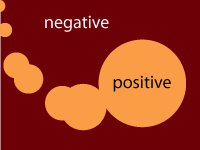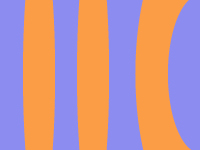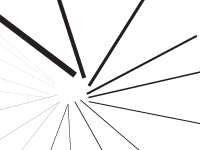What is “space”?
Space can be divided into different types, thus having slightly different definitions, as follows:
Two-Dimensional Space
2D space is a measurable distance on a surface which shows length and width but lacks thickness or depth.
Three-Dimensional Space
3D space is a sensation of space that seems to have length, width, and height to create visual or real depth. This term can also describe the perception of 3D space within a two-dimensional composition.
Four-Dimensional Space
4D space is a highly imaginative treatment of forms that gives a sense of intervals of time or motion.
How do we manipulate spacial illusion in two-dimensional art?
Within each of these types of space, there are some major principles that guide our perception of how the space is rendered:
- positive and negative shapes
- direction / linear perspective
- scale / proportion
- overlapping shapes
Positive and Negative Shapes
Positive shapes are the enclosed areas that represent the initial selection of shapes planned by the artist. They may suggest recognizable objects or merely be planned non-representational shapes. Negative shapes are unoccupied or empty space left after the positive shapes have been laid down by the artist; however, because these areas have boundaries, they also function as shapes in the total pictorial structure.
Sometimes, especially in abstractions, it is difficult to ascertain positive from negative shapes, making space appear more two-dimensional in quality.
Direction and Linear Perspective
Direction can set the mood of a design as it suggests movement. Four basic types of direction in two-dimensional design are:
- vertical
- horizontal
- diagonal
- radial
Notice that the four types above move on the flat, planar x and y axes. Artists can also depict the illusion of three-dimensional movement through linear perspective, which can induce a feeling of moving forward or backward on the “z-axis”, in and out of the picture plane, respectively.
Proportion / Scale
Proportion deals with size ratios between shapes/forms in a composition. Scale is a specific device that enables artists to manipulate these proportions. Typically, larger objects advance into the foreground, where smaller items recede toward the background.
Overlapping Shapes
Overlapping shapes in a composition generally gives a perception of depth, pushing obects on top closer to the viewer and objects in the back further away from the viewer.







